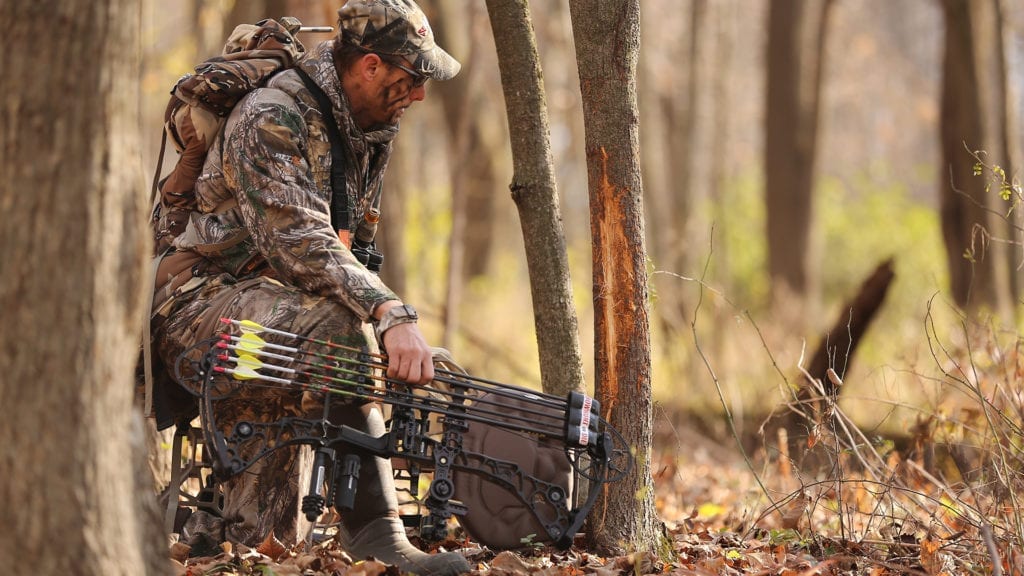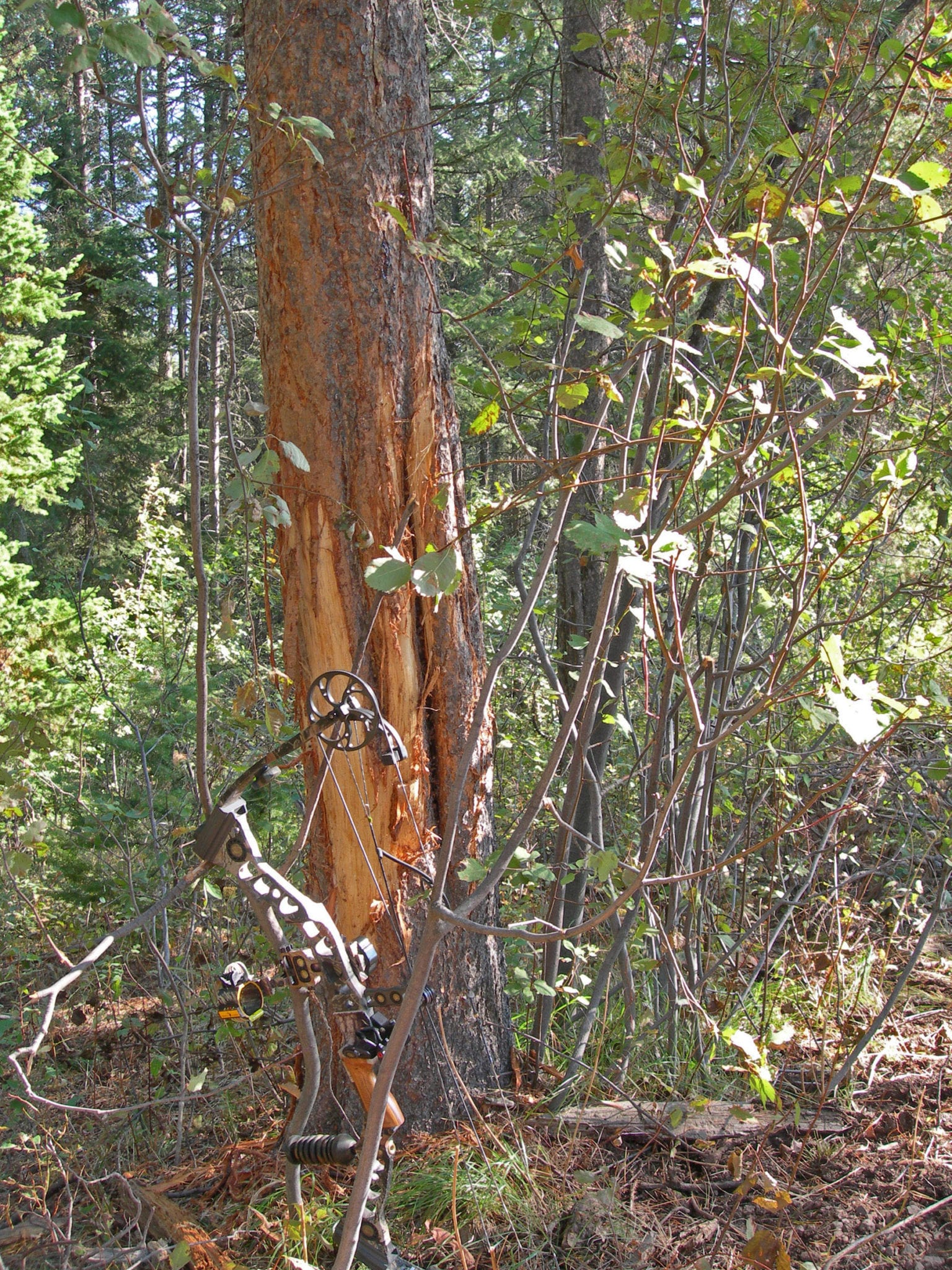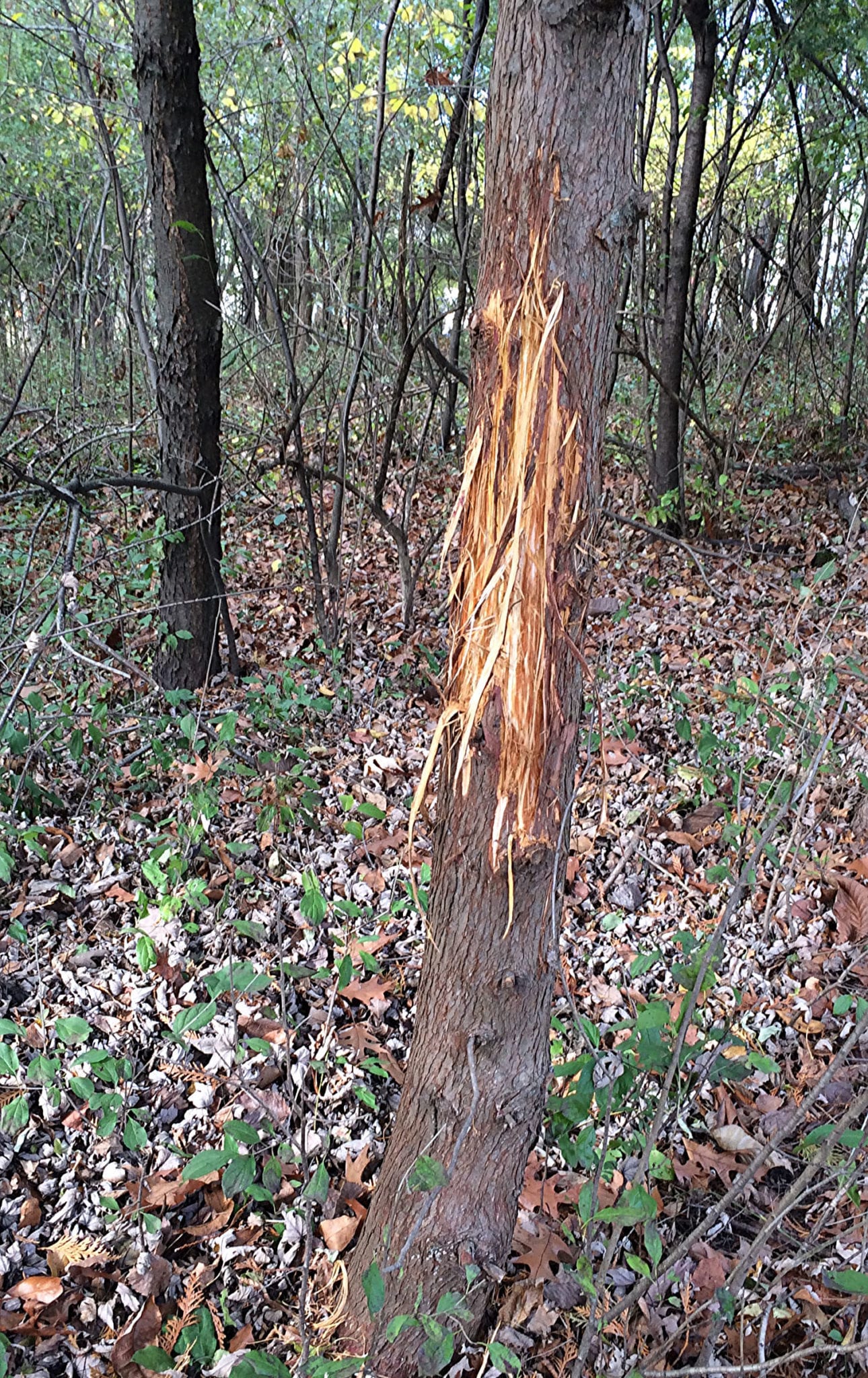If it were possible to collect buck rubs the way I hoard shed antlers, moose skulls and old wasp nests, my home would have been paneled with shredded saplings years ago.
But one can’t just haul away every young tree or aging fence-post that bucks beat and tatter with their antlers. So instead I often photograph their rubs while scouting, hiking or hunting elk mountains and deer woods.
The thicker the rubbed tree and higher the rub, the greater the intrigue and need to pose someone alongside for perspective. In a pinch, a bow or rifle can provide the photographic proportions, but a kneeling hunter works best.

Serving as an indication that a buck is close by, rubs have always intrigued deer hunters.
It’s also fun to wonder what inspires a buck to rub. We assume they rub trees to work off mounting aggression as their testosterone builds for their species’ breeding seasons. We also speculate that they rub to leave visual signs of their presence. Others think all this rubbing stimulates them sexually. Still others say they do it to intimidate nearby bucks. And yet others think they target aromatic tree species because they like the smell of freshly torn fir, pine, cedar or sassafras, depending on the region.
Whatever. They might rub for all those reasons and more, but as long as they keep rubbing, we’ll keep speculating. All that’s certain is that bucks and bulls usually target smooth-barked trees with bare, branch-free trunks so they can easily rake their antlers up and down to pulverize the bark. When they’re especially agitated or hold their antler tines just right, they’ll rub and cut through the outer bark and inner bark to lay bare wide swaths of the cambium.

Elk rubs always inspire awe and wonder.
Elk and moose don’t always stop there. If their antlers catch a small tree just right, they’ll rip it from the ground, roots and all. I know this to be true because I’ve often photographed such brute destruction.
But however deeply big deer rub, and whatever motivates their efforts, these bucks and bulls intentionally or incidentally leave forehead scents on the bark. In turn, that triggers other passing males of their species to take their turn rubbing and enlarging the tree’s wound.
The thinking holds that the bigger the rubbed tree, and the higher the rub on the trunk, the bigger the buck or bull doing the damage. We assume they target trees according to body size. But as many folks with motion-activated trail-cameras can testify, sometimes little bucks rub big trees and sometimes big bucks thrash only willow whips and other wispy wood.
And, of course, that leads to even more theorizing among hunters. Some speculate that a trophy buck actually rubs the tree first, and then smaller bucks smell the brute’s scent and rub there just to prove they’re unintimidated – even though the big guy’s nowhere near.
Over the years I’ve photographed some fascinating rubs. When hunting prairie habitats in eastern Colorado and northeastern South Dakota, for example, I’ve found fence posts shaped like hourglasses, their middles worn to wasp-like waists from decades of rubbing.

Bucks have spent many autumns rubbing this fencepost in northeastern South Dakota, where preferred rubbing trees are scarce.
But we seldom see such perennial rubs in Wisconsin and across the Great Lakes states. Why? Because we have plenty of rub-worthy trees. In tree-sparse prairies, bucks must rub what’s available, and fenceposts suffice. Some fencepost rubs even break off at their waist because, unlike trees, they can’t treat their wounds.
But you don’t have to drive thousands of miles to find buck rubs. You don’t even have to be in a true deer woods. In early November, for example, I parked my truck in our driveway at the edge of town, looked uphill where the yard meets our small woodlot, and spotted a fresh rub on one of my white cedars.
A buck had wandered through overnight, liked the 4-inch-thick pruned trunk of my 25-year-old cedar, and thrashed it. I’ve seen rubs before in our little woodlot, but never at the yard’s edge on a tree I’d planted myself. After deciding the tree would survive, I did what I normally do when finding a rub: I got my camera and took a photo.
About a week later, after returning from the post office, I parked again and looked toward my abused cedar. I did a double-take. A bigger, faster-growing cedar 10 feet farther uphill bore a fresh scar, and its shredded bark swung like cornrow braids on Bo Derek.

A buck rub at the edge of the author’s backyard.
If only it were near any of my tree stands in Richland, Ashland or Waupaca counties. I mean, the cedar’s trunk is 4.5 inches thick and the rub 2 feet off the ground.
Chances are the same buck made these matching rubs, and the second assault was clearly more frenzied than the first. I like to think it targeted my stout cedars because they nicely match a big buck’s body and antlers.
I expect both trees will live, but I’m not so sure about the buck. This is the edge of town, after all. Although the buck feels secure passing through in darkness, and sometimes even bedding overnight, our woodlot lacks the cover required of daytime sanctuaries.
That means the buck must avoid hunters in the adjoining woods beyond the city limits. It’s done so before, of course, but did it pull through again?
I hope so, even if it means this unseen vandal returns to savage my cedars again next November. I’m like most hunters, you see: If I can’t shoot him myself, I’ll root for him against all comers.

 By
By 



